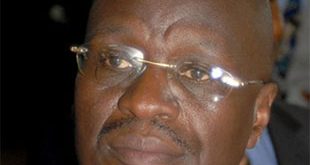Many manufacturers have their own corporate social responsibility projects going on and may not understand why they have to pay more to offset the impact of their activities. How will you ensure they buy into this initiative?
The way we are planning to work with offsets is by measuring the (negative) impact that businesses are causing on the environment. For instance, can those businesses that are going to extract the oil actually pay for the damage they are going to cause? That money may not exactly be invested in the area where they are working but, if say, there are trees that are going to be destroyed there, can we use these funds the organizations have brought in to plant trees so that we don’t lose the trees completely. These are the kind of offsets we are talking about. For instance, if after doing an environmental impact assessment (EIA), it is found that there is a lot of pollution that is being emitted by the factories, then we cost that so we offset the pollution. We know there are businesses doing some work with their CSR projects but that is their own initiative. Offsets will be required by law to be done. It is going to be something that the government will have to implement. Without doing so, we don’t have a future. The good thing is that the businesses will have to choose where to put their money for the offsets although it will be equivalent to the assessment that has been done.
In February, this year, you gave out over a billion shillings (US$300,000) worth of grants to local conservation organizations—all based in the Albertine region. Was this deliberate?
Yes, because when you are using grants, some grants are restricted to specific geographical areas or specific types of biodiversity to be conserved. Some donors will give you money for chimpanzees; others will give you money for lions or rhinos and you have to make sure that when you are giving out money, it is within those lines. So, it was specific to the Albertine region. We are doing pre-emptive measures to make sure that by the time oil production starts, we don’t lose so much biodiversity. So we are, for example, looking at protecting the biodiversity of Budongo and Bugoma forests and Murchison Falls. But not all the projects we gave grants were within the Albertine region. We have, for instance, funded a project in Kamwenge District but not for Kamwenge’s sake. This project is looking at going to different areas around the Albertine and pulling out different species of original plants and keeping them in Kamwenge such that in case they are destroyed at one point, we will be able to pick seeds from this “gene bank” to replant in future.
What other priority projects are you looking at funding in future?
We have key biodiversity areas that we have identified in this country. These include the Kidepo Conservation Area, areas around Mount Elgon, Mount Rwenzori and, areas around the Albertine region, including several biodiversity hotspots like Budongo and Bugoma forests, and the Murchison Falls Conservation Area. We are looking at different areas where there are so many plants, birds, and animals. That is not to say that the projects we fund cannot be outside the key biodiversity areas; they can be but largely, we are focusing on those mapped out areas because this is where it is urgent for us to do so. We are also looking at building the capacity of those people neighbouring the biodiversity hotspots. We are focusing on people considering that the human-wildlife conflict is increasing and we have to ensure that people live in harmony with the animals.
It seems the world view of conservationists and investors in this country will never converge. What explains the difference in perspective of how best to develop this country?
One of the key challenges that we find is the conflict between development, the investors and biodiversity conservation. But I think this country has now realized that we need to create a balance between investment and conservation. In the new NEMA Act, they are talking about offsets and they are now working on guidelines of how these offsets will work. So every business or investor setting up a factory or industry will be required to do an EIA where the kind of offsets needed will be determined.We are hoping that the government will stand with us because if you look at the swamps that have gone, they have given them out in the name of investors and they have disappeared. That’s why Kampala floods and stinks. We are hoping that the executive arm of this country will also think about the future generation; not in terms of how rich they are but how they can survive with the little they have because it is one thing to have money and it is another thing to have cancer and yet, not even your money can save you. Our message is that we can be a developed country while also focusing on environmental conservation.
Finally, does Uganda need to rethink its development strategy?
Yes, and I have big expectations and trust in Ugandans— that if we put our minds together and look at this country in totality— we can do better. We are still able to take Uganda to the pre-1980s when we used to have big hectares of forest cover. We can still develop as long as we are able to communicate among the different arms of government.We should communicate with one voice and we can do so by looking at Uganda in totality and know what is good and what is not good for us. We can then map out the pathways for development so we use some and keep the rest for our children.
****
 The Independent Uganda: You get the Truth we Pay the Price
The Independent Uganda: You get the Truth we Pay the Price



